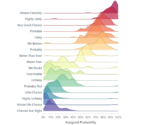
by tyler garrett | Jun 12, 2025 | Data Processing
As digital environments grow increasingly complex, tracking data lineage becomes vital for organizations aiming for transparency, trust, and operational efficiency. Implementing scalable lineage tracking without compromising throughput is a unique challenge businesses face today. When properly implemented, robust lineage tracking enables data stakeholders to confidently trace data journeys from creation to consumption, diagnose quality issues quickly, and ensure regulatory compliance with ease. Yet, many organizations fear that tracking lineage exhaustively might introduce bottlenecks, impeding their data pipelines’ performance and agility. At Dev3lop, we’ve seen firsthand how effective lineage tracking can accelerate analytics initiatives rather than slow them down. By utilizing advanced techniques, intelligent software frameworks, and strategic practices, companies can achieve detailed lineage insights at enterprise scale—without sacrificing throughput or performance. In this article, we outline strategic concepts, practical approaches, and technology insights that allow organizations to implement efficient and scalable lineage tracking.
Why Lineage Tracking Matters for Modern Data-Driven Enterprises
In modern data-driven enterprises, data lineage tracking is no longer a mere luxury—it’s become an essential mechanism to maintain business agility and ensure reliability in decision-making. Today’s business leaders don’t just require reports; they rely on complex data workflows feeding sophisticated analytics and machine learning models. Reliable lineage tracking enhances these workflows by providing transparent visibility into how data travels through various stages, thereby boosting stakeholder confidence in business intelligence and analytics outputs.
For instance, lineage tracking simplifies troubleshooting when addressing performance degradation or inaccuracies in outputs, enabling swift diagnosis and mitigation of issues. Moreover, it supports compliance efforts by providing auditors and regulators explicit insights into how sensitive data is collected, processed, and stored within complex data ecosystems.
As companies increasingly adopt hybrid and multi-cloud infrastructures for their data workloads, managing data lineage becomes even more crucial. You can explore our insights into leveraging cloud and hybrid workloads in our article on data fabric visualization. Leveraging robust lineage capabilities helps enterprises streamline hybrid workloads and avoid risks associated with compliance and transparency demands in regulatory environments, ultimately empowering the organizations not to sacrifice throughput.
Common Challenges: Traditional Lineage Tracking vs. Scalability Demands
Traditional approaches to data lineage tracking have historically struggled in scaling to meet the growing complexity and velocity requirements of modern data architectures. Often, organizations rely upon outdated or manual processes—such as spreadsheet-based documentation and manual tagging—which slow the pace of innovation and complicate high-velocity analytics projects. Such manual approaches inevitably lead to inaccuracies and become barriers when scaling lineage tracking across organizational silos or massive data pipelines.
Moreover, scalability demands require lineage tracking systems that can effortlessly integrate with evolving microservices and API-driven architectures. Critical information is often siloed within numerous platforms or services, complicating visibility and proactive monitoring. To better comprehend effective patterns in architecture, refer to our insights on data architecture patterns for microservices and discover how lineage tracking can be effectively implemented within these structures.
Furthermore, traditional lineage may restrict sustained analytics throughput, effectively creating bottlenecks and added latency. Organizations implementing outdated lineage tracking methods often have to make difficult trade-offs between accuracy and speed—which inhibits their ability to maximize throughput and accelerate analytical efforts.
Achieving Effective Lineage Tracking at Scale with Event-Driven Architectures
To achieve lineage tracking without sacrificing throughput, organizations frequently employ event-driven architectures or event-streaming platforms like Apache Kafka or AWS Kinesis. Event-driven frameworks enable asynchronous data capturing methods, allowing data movement and lineage metadata generation without introducing latency into analytics workflows. Because events effectively capture metadata in near-real-time, this opens opportunities for streaming analytics and sophisticated monitoring patterns, which allows enterprises to act instantly on insights while maintaining complete lineage.
Event-driven lineage tracking mechanisms skillfully resolve complex problems commonly associated with out-of-order event processing strategies. For organizations utilizing data-driven decision-making, events arriving late or disordered can introduce inaccuracies and degrade analytical outputs. By employing intelligent event-handling mechanisms and robust timestamps, modern lineage frameworks adeptly handle these challenges—ensuring metadata and lineage details remain accurate and reliable at scale.
Harnessing advanced event-driven lineage tools ensures flexibility in adapting to changes within data infrastructures. Event-based lineage frameworks facilitate seamless integration with cutting-edge technologies, including APIs common in today’s analytical delivery platforms like Procore. Review our Procore API consulting services for real industry examples where API-driven lineage has improved visibility, reliability, and performance.
Leveraging Data Lakehouses and Data Fabric Approaches for Smooth Lineage Scaling
As modern enterprises seek effective lineage capability that scales gracefully without latency overhead, many leverage concepts such as data lakehouses and data fabrics to facilitate comprehensive lineage tracking across diverse enterprise environments. A data lakehouse architecture effectively integrates benefits of data lakes and traditional data warehouses, providing mechanisms to store, trace, and consume lineage metadata fluidly. Through the robust implementation principles outlined in our article on data lakehouse implementation, organizations streamline complex lineage tracking tasks across integrated data landscapes.
Similarly, data fabric provides seamless integration capabilities, stitching together hybrid cloud workloads and various data environments, allowing clear visibility into lineage flows. Organizations adopting data fabric approaches efficiently analyze metadata across disparate workloads, enabling sophisticated tracking and diagnostics while preserving optimal analytical performance and scalability. Taking these approaches makes lineage tracking not burdensome, but rather a built-in capability driven by metadata intelligence—free-flowing seamlessly within the enterprise architecture.
Adopting Infrastructure-as-Code and Automation to Support Lineage Scalability
Ensuring lineage tracking scales without impeding throughput requires systematic methods and infrastructure capabilities robust enough to handle lineage demands efficiently. Modern practices like Infrastructure-as-Code (IaC)—addressed in detail within our data engineer’s guide to infrastructure-as-code—allow scalable deployment of lineage tracking infrastructures, thereby eliminating the limitations traditionally experienced by manual provisioning.
Automation frameworks provided through IaC enable enterprises to strategically and rapidly provision lineage-tracing-backbone components, error-proofing complex deployment architectures. Automation also ensures accuracy, agility, and rapid deployments for lineage visibility at each incremental stage of analytics development—thus minimizing manual intervention and human-errors.
Especially relevant for microservices environments, automated deployments simplify integration efforts, creating a unified lineage tracing mechanism effortlessly across diverse data streams and services. Embracing automation capabilities through Infrastructure-as-Code frameworks ultimately ensures lineage monitoring continues at scale, minimizing latency overhead, and ensuring high analytical throughput across ever-growing business complexities.
Secure Lineage Tracking: Facilitating Privacy and Compliance Demands
Lineage tracking at scale must also maintain robust security measures to preserve sensitive and confidential data passing through critical workflows. Modern lineage capabilities include methods like secure multi-party computation (MPC), ensuring privacy-aware lineage tracking protocols. Review our insights into multi-party computation for secure data analysis for guidelines on creating secure lineage visibility without compromising sensitive datasets.
MPC and related secure computation protocols empower collaborative analytics and lineage tracking while preserving data privacy and meeting stringent legal compliance criteria. Enterprises adopting secure lineage mechanisms integrate visibility, accuracy, and trust with the transparency demanded by regulators and audit organizations.
Complementing secure lineage implementations with effective data visualization, guided by inclusive design principles from our article on designing accessible visualizations for screen readers, helps ensure all stakeholders can effectively understand metadata and lineage information regardless of technical proficiency or special accessibility requirements.
Conclusion: Achieve Scalable Lineage without Compromising Performance
Efficient, scalable data lineage tracking remains a transformative capability for data-driven enterprises. Organizations no longer have to compromise analytical throughput to obtain detailed lineage visibility. Employing modern event-driven architectures, cloud integration methodologies, automated infrastructure provisioning, secure privacy protection strategies, and data fabric models allows enterprises to confidently scale lineage tracking—boosting transparency, compliance, accuracy, and analytical performance.
To discover more about building scalable, innovative data-driven solutions, check out Dev3lop’s insights into ETL (extract, transform, load), or explore how we assist enterprises in predicting client churn with open-source tools, and stay ahead in data innovation by understanding revolutionary quantum computing applications.

by tyler garrett | Jun 12, 2025 | Data Processing
In the fast-paced world of data pipelines and analytics, companies turn to distributed systems to achieve scalability, efficiency, and performance. However, hidden beneath these layers of scalability lurks an insidious challenge known as “hot partitions.” These seemingly innocent anomalies quietly sabotage your distributed pipelines, causing unexpected bottlenecks, performance degradation, and resource inefficiencies. Whether you’re invested in sophisticated data management or migrating your analytics workflow to the cloud, discovering how to identify, mitigate, and prevent hot partitions is critical. At Dev3lop, we consistently guide our customers to excellence, and today we’ll expose the true nature of hot partitions—highlighting strategic ways to overcome the hidden curse in distributed pipelines and unlock your data’s full potential.
Understanding Hot Partitions: Identifying the Dragon in Your Data Engine
A hot partition occurs when your distributed system disproportionately routes traffic or queries to one partition or node more than others. These concentrated workloads increase latency, decrease throughput, and negatively impact overall performance. Simply put—when one partition becomes “hot,” your entire pipeline experience slows, negating the distributed environment’s inherent benefits of parallel processing. This issue becomes more prominent as data scales and operations become complex, potentially causing significant reliability and performance problems downstream in your analytical workflows.
The underlying cause of hot partitions often stems from suboptimal choices made during the design phase, especially when determining partitioning keys or strategies. Perhaps you’ve selected a key based upon timestamp data or a frequently accessed non-unique identifier without sufficient analysis or planning. The issue becomes amplified in near-real-time streaming scenarios or high-throughput batch pipelines. This often overlooked challenge underscores the importance of thoughtful, strategic data pipeline design—something we explore in-depth in our article covering vector embedding pipeline design for semantic search applications.
Correct diagnosis of hot partitions often involves comprehensive monitoring, understanding partition-level behaviors, and visualizing data flows. These insights can offer actionable intel to pinpoint unbalanced workloads, facilitating rapid interventions. Leveraging visualization tools like Parallel Sets for categorical data flow visualization can greatly enhance your ability to detect and respond to hot partitions proactively.
The Impact of Hot Partitions on Your Data Infrastructure
Hot partitions don’t just reduce pipeline throughput—they also degrade overall system reliability and may increase operational costs. When one node or partition carries a disproportionately heavy workload, it creates a bottleneck that affects the entire ecosystem. Over-utilized nodes become points of failure, leading to downtime and poor user experience. Additionally, hot partitions can cause uneven resource utilization across your infrastructure, leading to inflated cloud costs and inefficient hardware usage. The promise of distributed computing—reliability, redundancy, and performance—can become compromised, quickly shifting your system from cutting-edge technology to costly liability.
Companies adopting cloud infrastructures, particularly platforms like AWS, often see peak performance degrade significantly when hot partitions become persistent. Such challenges necessitate intervention from professionals experienced in cloud efficiency and architecture optimization. Dev3lop offers specialized assistance that addresses precisely these demands through AWS consulting services. Working proactively with experts ensures accurate identification of infrastructure weaknesses due to hot partitions and empowers your organization with optimized configurations and thoughtfully designed distributed architectures.
Moreover, the presence of hot partitions leads to cascading impacts downstream in your analytical tools, data warehouses, ETL processes, and machine learning initiatives. Analytics processes become slower, dramatically impacting decision-making agility. It is crucial, therefore, to maintain an agile mindset in pipeline management and swiftly mitigate any instances to minimize their business impacts.
Common Causes: Why Your Partitions Overheat
Understanding why hot partitions develop is essential to proactively address and mitigate these issues. Common causes involve ineffective partition key selection, skewed data distributions, and improper query designs. For instance, time-based or sequential identifiers make convenient partition keys but often create concentrated workloads, especially evident when processing real-time or historical analytics. Even more, streaming data or event-driven architecture can amplify this imbalance significantly if not thoroughly considered during initial system configurations.
When choosing between tools in your analytics stack, understanding their nuance and when to implement them is crucial. For instance, deciding between certain data engineering techniques is explored thoroughly in our article comparing Python vs SQL for data engineering. Leveraging insight from expert tools can profoundly affect partitioning quality and the resulting processing efficiency.
Another key factor leading to hot partitions relates directly to user-driven data governance policies and definitions. Without adequately classifying and segmenting data thoughtfully, it becomes difficult to establish balanced partitioning strategies. You can find more information on setting up robust data classification methods in our deep dive into implementing effective user-driven data classification. Establishing a governance approach that integrates partition thinking early significantly minimizes future incidents of hot partitions.
Diagnosing Hot Partitions: Stay Ahead with Monitoring and Visualization
Early detection remains your greatest defense against hot partitions. You must develop accurate monitoring, insightful data visualizations, and clear analytics dashboards capable of capturing partition behaviors proactively. Techniques such as workload anomaly detection, resource-level metrics, and real-time visualization methods will empower your team to react quickly and efficiently.
At Dev3lop, we’ve strategically leveraged visualization techniques like categorical data flow visualizations and advanced parallel sets—tools we discuss in-depth in our article focusing on visualizing categorical data flows. Additionally, dynamically generating pipelines based on data governance mechanisms and metadata definitions brings greater agility and responsiveness; we discuss this further in our article on dynamic pipeline generation from metadata definitions.
By incorporating accurate monitoring and visualization techniques, your analytics stack gains resilience. Quick awareness translates into quick action, directly minimizing downstream disruptions. Leveraging various tools and visualizations places your organization proactively ahead of hot partition escalation, resulting in smoother pipeline operations and satisfied end-users readily able to acquire actionable insights from your most critical data assets.
Best Practices: Prevent Hot Partitions Before They Happen
Prevention clearly stands as the preferable alternative to reactive solutions. Balanced partitioning—based on a suitable diversity of keys, sufficient hash diversification, and continuous data distribution analysis—dramatically lowers hot partition risk. Regularly revisit historical analysis tools and temporal governance strategies to stay ahead of changing data distributions, as discussed in our detailed guide on temporal data governance for historical analysis.
Additionally, performing careful comparative assessments between open-source and commercial ETL solutions—highlighted in our guide comparing open-source and commercial ETL solutions—can pinpoint the tools providing the best built-in mechanisms to guard against partition skew. Selecting frameworks and tools that inherently encourage balanced workloads means fewer unexpected incidents and lower overall system management overhead.
Lastly, implementing an iterative methodology in pipeline design and adjustments ensures hot partitions never become systemic surprises. Continuous refinement, frequent revisiting of partitioning logic, and user-driven classification approaches represent key pillars of this proactive methodology. Although perfect balance may never truly exist across large-scale distributed data pipelines, collectively embracing these best practices positions your data operation to remain ahead of potential system bottlenecks reliably.
Overcoming the Hidden Curse: Your Strategic Next Steps
Hot partitions represent a significant yet often overlooked challenge within distributed pipelines and analytics workflows. Understanding their causes, preparing strategic diagnostic capabilities, and embedding preventive best practices avoid disruptions that cost your business efficiency, speed, and reliability.
At Dev3lop, we specialize in partnering on these challenges. By empowering teams and transforming systems, we facilitate meaningful innovation, unlocking your data’s full potential. If you require assistance navigating hot partitions, optimizing your cloud infrastructure, or achieving robust, scalable analytics capabilities—consider exploring our tailored AWS consulting services. Let’s overcome the hidden curse in your distributed pipelines, together.

by tyler garrett | Jun 12, 2025 | Data Visual
As quantum computing edges closer to reshaping entire industries, one particularly intriguing aspect of this emerging technology is the quantum internet. Unlike traditional data networks, quantum networks make use of quantum entanglement—a phenomenon Einstein famously dubbed “spooky action at a distance.” Visualizing these quantum entanglement networks effectively is paramount for scientists, engineers, decision-makers, and technology strategists to leverage their full potential. In this deep dive, we’ll demystify how advanced visualization techniques are becoming central to understanding quantum internet infrastructure. Through better mapping methods, stakeholders can unlock more secure communication paradigms, revolutionize data analytics, and swiftly navigate the complexities of quantum connectivity.
Understanding Quantum Entanglement Networks: Beyond Classical Connectivity
In classical networking, information travels as bits, represented as zeros and ones. Quantum networks, however, transmit quantum bits—or “qubits”—making use of quantum entanglement, where particles become intricately linked, regardless of physical distance. This entanglement allows the quantum state of one qubit to instantly influence another, enabling potential communication speeds and security enhancements previously thought impossible.
To appreciate the significance of visualizing quantum networks, it’s essential to comprehend the fundamental difference from classical networks. Unlike simple point-to-point transmission, quantum networks revolve around entanglement swapping, quantum state teleportation, and entangled node synchronization. Moreover, the fragility of quantum states demands continuous monitoring and fault-tolerant network architectures. The need for advanced visualization techniques, akin to those explored in our previous article on Quaternion-based Visualization for Higher Dimensional Data, becomes evident when considering the multidimensional and counterintuitive nature of quantum entanglement.
Decision-makers engaging in quantum technology initiatives must grasp these differences to develop effective strategies. Visualization techniques that capture and convey entanglement connections graphically help stakeholders intuitively interpret the quantum data infrastructure. An informed visualization can lead to better network optimization, troubleshooting, and strategic planning, translating abstract quantum concepts into actionable insights.
The Value of Quantum Network Visualization: Informing Strategic Decisions
Visualization of complex networks isn’t just a novelty—it’s an essential strategic tool for decision-makers. Quantum networks add layers of complexity due to entangled nodes, multidimensional state information, environmental fluctuations, and quantum error correction protocols. By harnessing state-of-the-art visualization methods, organizations can intuitively understand this complexity, drastically shortening the decision-making lifecycle and fostering innovation in applying quantum technologies.
Innovative visualization tools translate quantum network data into understandable visuals like node-link diagrams, multidimensional visual networks, interactive tours, and exploratory analytics dashboards. Inspired by methods described in Interactive Tour Design for New Visualization Users, quantum network visualizations empower first-time users and seasoned professionals alike. They provide context-driven insights, allowing for streamlined communication, stakeholder alignment, and effective strategic discussions around investments, partnerships, and infrastructure deployments.
Businesses, governmental organizations, and academic institutions leveraging visualization strategies can better measure their quantum infrastructure’s operational health, assess security vulnerabilities, and implement targeted strategies. Such informed actions result in significant competitive advantages by accelerating innovation and reducing operational uncertainty around quantum technology adoption.
Emerging Visualization Techniques for Quantum Entanglement Networks
The demand for quantum network visualization is propelling the development of groundbreaking visualization techniques. Since quantum networks deal with multi-state, dynamic, and inherently probabilistic data, emerging visualizations integrate advanced multidimensional rendering methods such as WebGL, SVG, and Canvas-based rendering strategies. Our comparative analysis, SVG vs Canvas vs WebGL rendering choices, highlights critical decisions when determining suitable visual rendering techniques for quantum data.
Dynamic mapping tools, built upon robust data pipelines leveraging ETL processes optimized for quantum-scale data analytics, can display the flow and status of entangled connections in near-real-time. Additionally, visualization solutions that integrate quantum measurement data with classical network metrics create intuitive hybrid diagrams, offering clarity into the interplay between quantum and conventional network components.
Moreover, advanced rendering methods can effectively portray quantum effects, like quantum teleportation events, entanglement robustness metrics, and co-dependent interactions, offering strategic clarity. Decision-makers require this visual analytical capability to closely monitor, forecast, and direct proactive responses strategically, providing adaptability essential to managing quantum technology’s scale and pace.
Connecting Quantum Visualization Tools to Broader Data Infrastructure
Quantum network visualization is only as strong as the underlying data infrastructure backing it. Adopting modern data engineering practices like Infrastructure as Code (IaC) can significantly improve the robustness, reliability, and scalability of quantum network visualization infrastructures. In our recent guide, the Data Engineer’s Guide to Infrastructure as Code, we comprehensively discussed this crucial strategy for building resilient analytical systems.
Ontology and semantic integration further empower quantum visualization capabilities by harmonizing diverse data inputs and structures. Quantum datasets comprise complex underlying concepts that benefit significantly from semantic integration methodologies. These methods include an ontology-driven approach, thoroughly explored in our article detailing Ontology-driven Data Integration. These approaches help unify classical and quantum datasets into coherent semantic layers, enhancing data quality, consistency, and understandability for more accurate network visualizations and informed business strategies.
Integrating quantum network visualizations with broader corporate data workflows is instrumental in fostering robust analytics foundations. Forward-thinking companies prepare their data environments today, ensuring seamless interoperability between classical components (analytics, business intelligence, reporting) and emerging quantum metrics. This proactive infrastructure design aligns seamlessly with strategic forecasting, planning, and operational goals in leveraging quantum technology innovations effectively.
Quantum Internet Visualization: Positioning for the Future Data Industry
Quantum computing’s transformational impact on the data industry is no longer theoretical; it’s increasingly tangible with each technological advance achieved in this rapidly evolving domain. Quantum network visualization stands at the frontlines of harnessing quantum computing’s potential benefits, positioning organizations to strategically deploy next-generation quantum infrastructures effectively. Organizational leaders must familiarize themselves with how technologies like quantum visualization underpin strategic data-driven innovation, informed infrastructure investments, and enhanced analytical capabilities.
Quantum network mapping is not just about understanding the present system; it’s about preparing for the future. Our previous exploration, “How Quantum Computing is Set to Transform the Data Industry”, highlighted quantum computing’s immense transformative potential. Quantum visualization is uniquely positioned to unlock hidden insights, validate quantum network coherence, simplify quantum-state-based workflow debugging, and optimize planning trajectories.
By viewing quantum network mapping strategically, leaders can proactively navigate complexities and embrace quantum solutions with clarity and confidence. Partnering with seasoned experts who provide robust visualization solutions and specialized AI & Agent Consulting Services ensures organizations remain responsive, informed, and strategically competitive in their quantum computing endeavors.
Embracing Quantum Network Visualization for Strategic Innovation
The digital age waits for no one, and quantum computing stands ready to reshape data analytics paradigms. Decision-makers who embrace visualizing quantum entanglement networks are investing in understanding the next frontier of connectivity. Visualization of quantum networks offers strategic clarity, simplifies quantum complexities, and strengthens stakeholders’ ability to make informed decisions swiftly and confidently.
As a trusted data analytics innovator and strategic consultant, we support leaders in gaining competitive advantages through quantum-entanglement network visualization tools crafted with clarity and strategic intent. Let’s face quantum data innovations with informed confidence, allowing companies to embark confidently on their quantum journeys, fully equipped for the evolving complexities of network analysis, analytics, and data innovation.
By visualizing quantum networks effectively, organizations will position themselves at the forefront of the forthcoming technology revolution, unlocking unprecedented opportunities for growth and leadership.
Tags: Quantum internet visualization, Quantum entanglement mapping, Data visualization consulting, Quantum computing strategy, Advanced network analytics, Quantum technology innovation
Thank you for your support, follow DEV3LOPCOM, LLC on LinkedIn and YouTube.

by tyler garrett | Jun 12, 2025 | Data Visual
Imagine a world where our brains directly communicate with technology, bridging cognition and computation seamlessly. Brain-computer interfaces (BCIs) are evolving from futuristic concepts to transformative realities, unlocking profound potential in healthcare, productivity, and human enhancement. However, alongside the rapid advancement of BCIs emerges the necessity of analyzing neural data with clarity and precision. Neural signal visualization isn’t merely an aesthetic component; it’s the core bridge between raw neural data and actionable insights. As forward-thinking leaders, understanding the technical depth, strategic advantages, and innovative opportunities of neural signal visualization within BCI analytics can allow your organization to stay ahead in an evolving landscape. Let’s dive deeper into the compelling field of neural analytics visualization, unraveling not only “how” the technology works, but also revealing hidden opportunities that could elevate your organization’s data-driven strategy and operational success.
Understanding Brain-Computer Interface (BCI) Analytics
Brain-Computer Interfaces are transformative technological systems enabling direct communication between the human brain and external devices, effectively translating neural activities into actionable data. These advanced systems leverage sophisticated analytical models and visualization tools to decode complex neural signal patterns, unlocking transformative opportunities in healthcare, industry, gaming, education, and more. The analytical cornerstone of BCIs involves ingesting and interpreting massive quantities of neural data, applying predictive algorithms, and converting raw signals into meaningful information.
Effective BCI analytics relies heavily on powerful data processing methods. With companies facing challenges in data management, the integration of robust analytics practices becomes crucial. Often, organizations struggle with fixing their data lakes directly within reporting software, which is problematic and limiting. To maximize the value extracted from neural data, leaders must invest in specialized analytical strategies that precisely filter valuable information and maintain data quality. With careful analytics implementation, neural signals can guide decision-makers toward unprecedented operational advancements, improved user interfaces, and innovative service offerings.
Neural analytics methodologies involve powerful filtering and data structuring techniques. Leveraging tools like SQL becomes paramount, especially when precise data selection and filtering matters significantly. Mastery of advanced practices such as accurate data filtering with SQL WHERE clauses ensures clarity and accuracy in interpreting BCI signals. As neural data complexity grows, strategic analytics becomes the backbone empowering organizations to make confident, informed decisions based on human cognition and brain data.
The Essentials of Neural Signal Visualization in BCIs
Visualizing neural signals is a powerful step toward unlocking the complex mysteries of brain dynamics. It’s the vital medium translating sophisticated neural data into intuitive, understandable presentations, enhancing decision-making processes and facilitating rapid interpretation by various stakeholders. Neural visualization tools parse through multi-dimensional data, highlighting critical patterns, trends, and anomalies that stakeholders need for swift, informed decisions. Clear visualization of neural signals significantly reduces human cognitive load, making insights quickly recognizable and actionable—a necessity for timely interventions, treatments, or interface adjustments.
When visualizing neural data, organizations must select optimal visual rendering methodologies tailored to their analytics objectives. Choices such as leveraging SVG, Canvas, or WebGL rendering technologies significantly impact performance, flexibility, scaling, and interactivity of data visualizations. SVG-based visuals allow precision, clarity, and scalability, while Canvas and WebGL enable intensive data-driven renderings for real-time analytics, crucial for continuous BCI monitoring. Strategically choosing visualization techniques and tools ensures efficiency in handling high-frequency neural data streams.
In the context of streaming neural data, understanding windowing techniques like tumbling windows versus sliding windows is crucial. These temporal data window methods allow nuanced identification of trends or transient neural events, aiding in sophisticated analyses and deeper neural signal understanding. Intelligent visualization not only aids internal analytical insight but enhances user-facing interfaces in healthcare providers, researchers, or industry specialists searching for meaningful patterns from brain-generated data.
Realizing Strategic Benefits Through Neural Visualization
Strategically deploying neural visualization tools unlocks numerous operational and business advantages. In healthcare, clear neural analytics visualization helps medical professionals rapidly diagnose neurological deficits, monitor patient recovery, and deliver personalized therapies. Engaging visualizations significantly enhance data interpretation speed, ensuring swift and accurate clinical decision-making, thereby reducing operational bottlenecks and optimizing patient care outcomes.
Likewise, precision neural visualization is beneficial to operational efficiency initiatives. For instance, empowered by better neural data strategies, organizations can experience efficient production planning and improved resource allocation. By quickly identifying cognitive trends and ecologically contextual signals within workforce interfaces, companies can effectively realign strategies, streamline training processes, and boost productivity. Essentially, clear visualization within BCIs is not just about understanding data but is directly associated with maximizing organizational efficiency and operational excellence.
From an innovation and strategic growth standpoint, visually coherent neural analytics allows executive teams to effectively identify and leverage previously hidden opportunities. Forward-thinking organizations use visualization to interpret user cognitive feedback, refining how their users interact with products or services. As organizations become increasingly data-driven, strategically embedding these techniques allows them to capitalize on novel opportunities, driving product innovation, market differentiation, and competitive advantage. Indeed, uncovering hidden opportunities through disciplined data analytics becomes significantly easier when neural visualization becomes part of an analytics workflow.
Ethical and Responsible Practices in Neural Signal Visualization
In the rapidly evolving domain of neural analytics, decision-makers must address the ethical and responsible handling of sensitive neural data diligently. Data ethics—particularly within neural signal visualization—is paramount due to the brain’s intrinsic sensitivity and privacy concerns. Transparent neural visualizations promote accountability and build trust among all stakeholders, providing clarity about how neural data is used, analyzed, stored, and visualized.
Organizations integrating BCI analytics and visualization should strongly consider establishing a dedicated data ethics board technical advisory process. An ethics-focused approach ensures responsible use of neural signals, thus avoiding data misuse, protecting individual rights, and ethically managing sensitive insights extracted from brain recordings. These efforts establish trust and promote widespread adoption of neural analytics technologies across sectors.
Moreover, adopting probabilistic data structures in neural data stream processing aligns further with ethical data practices. Probabilistic methodologies allow organizations to effectively manage neural data while balancing data accuracy, privacy considerations, and processing efficiency. Ethical visualization practices must remain a strategic cornerstone for organizations exploring BCIs—it highlights responsible behavior, boosts consumer confidence, and sustains organizational credibility in technology deployment.
Empowering Your Organization with Expert BCI and Visualization Consulting
Navigating the complexity surrounding brain-computer interface analytics and neural signal visualization demands deep technical expertise and forward-thinking innovation. At Dev3lop, we’re dedicated specialists who empower leading businesses through advanced analytics solutions, cutting-edge visualization technologies, and strategic technical advice.
Our expertise offers your team not only access to leading neural analytics visualizations but also tailored services like our AI Agent Consulting Services, designed specifically for businesses ready to strategically harness brain-related data, AI, Machine Learning, and cognitive computations. By partnering with Dev3lop, organizations can promptly identify and capitalize in new markets, refining AI initiatives or BCI-driven strategies through strong data-driven innovation and best practices.
Embrace brain-computer interface analytics visualization not only as an emerging technology but as a strategic operational investment. Unlock hidden opportunities and overcome analytic complexities by visualizing neural data, transforming theoretical cognitive insights into tangible operational success and competitive advantage. Let> Dev3lop guide your BCI analytics journey, making neural visualization your strategic lever and innovation enabler.
Thank you for your support, follow DEV3LOPCOM, LLC on LinkedIn and YouTube.

by tyler garrett | Jun 12, 2025 | Data Visual
Imagine your hybrid data workloads as a symphony orchestra—each instrument valuable on its own, but truly transformative only when harmonized by the conductor. In the music of modern analytics, your data strategy serves as the conductor, managing diverse data sources, formats, and flows. Yet, today’s decision-makers grapple with data sprawls across multiple environments, from cloud platforms and on-premises warehouses to SaaS applications and more. Enter data fabric visualization, the conductor’s baton that stitches hybrid workloads into cohesive, insightful symphonies. In this article, we’ll explore how data fabric visualization strengthens data connectivity across heterogeneous environments, offering clear pathways for businesses to orchestrate insights seamlessly, accurately, and reliably.
A Visionary Approach: Understanding Data Fabrics
A data fabric stands as a strategic architectural concept aimed at simplifying data management complexities that inevitably arise in hybrid or multi-cloud environments. In short, the data fabric approach unifies disparate data sources and makes them accessible via a unified and consistent data management framework. At the heart of a data fabric lies automation, integration capabilities, metadata management, governance, and semantic enrichment—key ingredients that empower businesses to turn raw data into actionable insights.
But simply setting up a data fabric isn’t the endgame; visualizing these complex, interconnected data pipelines brings true clarity and power. Effective visualization allows stakeholders not only to see precisely where data resides and how it moves, but also to unlock strategic value in their data assets. By stitching the data fabric with visual clarity, stakeholders across the organization—from business executives to technical teams—can confidently navigate and understand data flows, ensuring that crucial business decisions are based on accurate, timely insights.
Without visualization, even the strongest data fabrics risk becoming opaque silos that obscure rather than illuminate. Indeed, organizations that neglect visualization may suffer increased confusion, slower response times, and limited agility. By embracing visualization, however, businesses reduce operational friction, increase stakeholder confidence, and gain strategic clarity on their data journeys. In short, robust data fabric visualization becomes the bridge that seamlessly connects technical capability to strategic business outcomes.
The Power of Visualization in Managing Hybrid Workloads
“Seeing is believing” could not ring truer in the realm of data management and analytics. Complex hybrid workloads, which might span thousands of distinct sources ranging from cloud services to legacy systems, require robust visualization capabilities to ensure clarity and coherence. Indeed, a well-designed visualization approach can transform daunting data landscapes into clear, understandable interactive visual aids grounding decision-makers with confidence.
One powerful example comes from parallel sets for categorical data flow visualization, which provides a dynamic means to trace connections across disparate datasets seamlessly. Techniques like parallel sets offer intuitively visual depictions of categorical data, enabling stakeholders to quickly grasp how data moves across business domains and identify bottlenecks or anomalies.
Similarly, revolutionary methods like holographic data modeling for multi-perspective analytics strengthen capabilities even further. These advanced visualization methodologies facilitate viewing multidimensional data from numerous perspectives. Stakeholders can immerse themselves in the data fabric and slice through millions of rows and data sources from unique angles, fostering deeper analytical insights. Combined with a strong data fabric infrastructure, businesses gain an unparalleled competitive edge, consolidating diverse workloads into an intuitive blueprint of understanding.
Ensuring Data Consistency: The Importance of Idempotency and Visualization
While visualization excels at highlighting the connections across your data fabric architecture, ensuring accuracy and consistency behind these visuals is critical. This is where the principle and practice of idempotent data transformations become tremendously important. By implementing idempotent operations, your data engineers can execute and re-execute transformations without ever corrupting or compromising data integrity.
Why visualize data processes without first guaranteeing trusted data outcomes? By embedding idempotency within your data fabric architecture, you’re able to reliably handle retries, manage failures better, and streamline continuous integration processes. This robust foundation of confidence, in conjunction with visualization, empowers your stakeholders to optimize hybrid workload performance more efficiently and identify potential issues at a glance.
Additionally, visuals illustrating data integrity checkpoints and idempotent logic help internal teams better understand complex data workflows. With a clear visualization of idempotent checkpoints and error handling, even non-technical leadership can easily grasp how their hybrid workloads prevent inaccuracies, avoid redundancies, and maintain clean data hygiene over time. This transparency fosters increased trust in your data fabric architecture, driving stronger organizational buy-in and ultimately delivering transformative business results.
Harnessing API Integration with the Data Fabric Visualization
Integrating Applications Program Interfaces (APIs) into hybrid workloads can significantly elevate the efficacy of a data fabric across distributed systems. APIs enable connections between previously disconnected data sources and allow your visualization layer to accurately reflect real-time source systems. If APIs intimidate or confuse your team, an extensive resource guide such as our comprehensive API guide for everyone delivers step-by-step instructions that make complex connections easy.
Leveraging APIs within your data fabric architecture enriches your visualization effectiveness. Real-time updates from various API sources, whether internal databases, cloud providers, or third-party SaaS solutions, reflect accurate, timely intelligence across visual dashboards. For instance, your sales team could have APIs configured to visualize critical CRM data alongside supplier and inventory data. Likewise, internal operational teams, empowered with API-driven visual insights, can identify bottlenecks promptly and optimize processes accordingly.
Moreover, a carefully managed API strategy helps ensure heightened security and governance throughout your data workflows. APIs set clear boundaries for internal and external data flows, incorporating proper access controls and authentication mechanisms. With APIs strategically visualized and documented, leaders have holistic transparency—helping them swiftly make informed business decisions with increased trust and agility.
Navigating Common Data Visualization Challenges with Proven Techniques
Despite advantages, attempts to visualize hybrid workloads frequently encounter hurdles. Whether it’s limitations like data size constraints—such as those explained in “connecting to Google Sheets exceeding 10 MB“—or challenges in performance optimization, selecting proper visualization strategies is crucial. Being aware of common pitfalls such as visualization clutter, poor readability, and data scalability limitations enables effective preemptive planning.
Your organization’s visualization approach should integrate best practices explained in “the importance of data visualization in data science“. Emphasis on clarity, simplicity, and focusing on relevant KPIs makes visuals easily interpretable for leaders across all departments. Implementing advanced filtering criteria, optimized visuals, and tightly linked navigational structures are just a few proven methods that can tackle complex environments seamlessly while maintaining optimal user experience.
Working alongside experienced data visualization and analytics consultants can further accelerate overcoming challenges and ensure successful project outcomes. Experts equipped with deep knowledge and best practices can smoothly navigate complex visualization requirements, clarify ambiguity, and ensure impactful, user-friendly designs. Experienced data consultants, such as the experts available through Dev3lop’s trusted MySQL consulting services, consistently help enterprises reach visualization excellence and drive results-oriented analytics programs.
Final Thoughts: Seamlessly Stitching Your Data Fabric Visualization
In today’s data-driven business world, data fabric visualization is no longer optional; it’s foundational to driving strategic advantage. By proactively visualizing hybrid workloads, embracing advanced analytics and modeling techniques, and applying best practices to API integration and idempotency, your organization can unlock deeper accuracy, agility, and confidence from its data fabric architecture.
Like an orchestra’s conductor commanding refinement and clarity, your visualization efforts orchestrate complex, diversified data processes. This produces powerful data storytelling that clearly communicates nuanced insights, enabling your stakeholders to engage effectively with analytics at every turn. Ready to conduct your enterprise’s analytics symphony? Now’s the time to stitch those hybrid workloads into the cohesive visualization tapestry driving extraordinary organizational effectiveness.
Thank you for your support, follow DEV3LOPCOM, LLC on LinkedIn and YouTube.






















